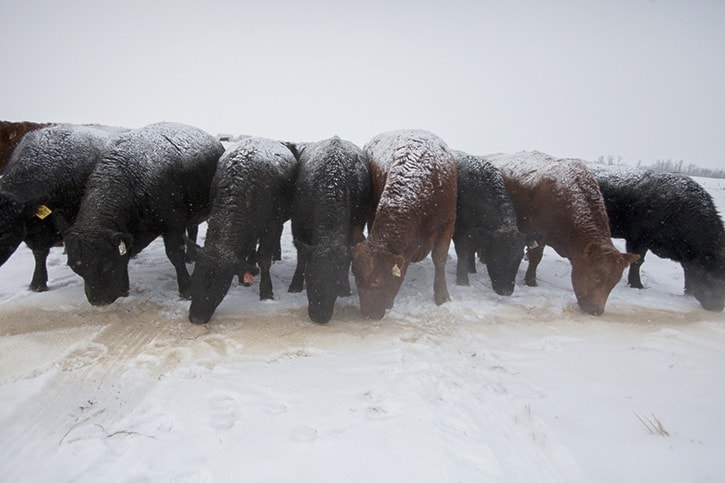Alberta Farm Animal Care (AFAC) believes their livestock care alert line is under-utilized and they made a presentation at the Agricultural Service Board's (ASB) regular meeting on Wednesday, Jan. 28 with a view to raising awareness on the line and how producers can benefit from it.
"The alert line is producers-helping-producers call line for producers to call if they ever see any livestock care concerns, so for example if a farmer notices that his neighbour's cattle is getting skinny, they could call the alert line and it's anonymous," said Kristen McDonald, marketing and membership manager, AFAC. "So what we do is we send out an alert line volunteer who is able to help and provide advice."
According to McDonald, the livestock care alert line is based on a more proactive and educational approach and is not regulatory or providing a veterinarian program.
"If the condition is considered more severe, and not something that is manageable, then we would pass that on to the SPCA" said McDonald. "Because they have that regulatory control, so they can go and seize the animals if need be, even euthanize it if need be, so that would be the kind of difference."
The calls that the alert line usually receives is mostly for cattle and horses.
"We receive more calls for cattle and horses as they are more visible and there are lots of them," added McDonald. "And the calls are monitored."
Between 2009 and 2013, the number of calls received were between 83 to 184 and were mostly related to adequate food and water, shelter, ventilation and space, proper health care and good animal handling.
According to AFAC, the number of cases per species varied widely with two elk cases, three poultry cases, four dairy cases, 10 sheep cases, 11 bison cases, 13 pig cases, 254 beef cases, 298 horse cases, and 27 other cases.
"There are humane handling guidelines that outline the common ailments and injury that occur in livestock and so they are each specific to their species and are based on the codes of practice and are constantly updated," said McDonald. "We are always working to improve our current programs and make them accessible, and the big one we are focusing on now is the livestock emergency handling trailers."
In Alberta, there are 12 livestock handling equipment trailers, which can come to the rescue.
"In 2013, we rolled out five livestock handling equipment trailers in Alberta, and these trailers have been used in truck roll-overs, natural disasters, barn collapses, and other situations," added McDonald. "There are now 12 trailers in the province and we've had great success with the program."
AFAC has also created a special training course in partnership with Lakeland College to train first responders on handling and dealing with livestock in emergencies.
